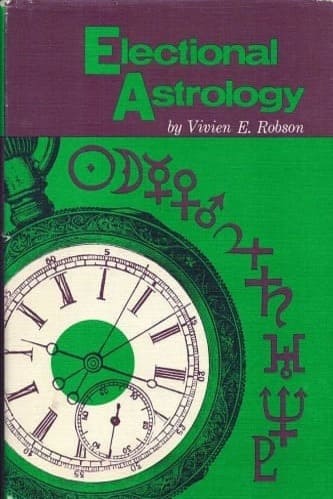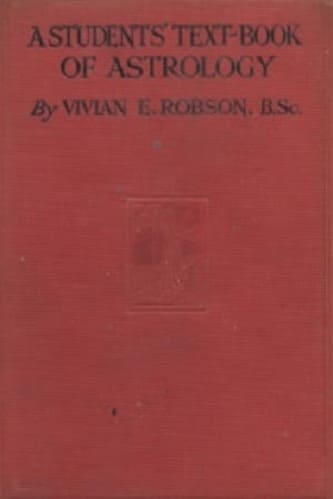Vivian E. Robson
About the Author
Robson, Vivian E(rwood) B.Sc. (1890-1942) A well-known English astrologer who combined a practical knowledge of mathematics and astronomy with a thorough knowledge of traditional astrology. He read French, German, and Latin and was learned in medieval and Renaissance astrology. His books were popular on both sides of the Atlantic and most of them also appeared in American editions. The books on Elections, the Radix System, and the Fixed Stars are still considered to be the prime English-language authorities on those subjects.
His book Astrology and Sex is an exhaustive treatment of the subject containing much detailed information that he assembled from a variety of sources. It is interesting to note his testimonial to the efficacy of the use of derived houses in natal chart interpretation (pp. 143-47). He mentions the French astrologer Eudes Picard (1867-1932) and was evidently familiar with his Astrologie judiciaire, which treats derived houses in great detail. This puts Robson in the same camp with J. B. Morin in opposition to those English astrologers, such as A. J. Pearce, who opposed the use of this “horary method” in natal astrology (because it was not mentioned by Claudius Ptolemy).
Following the death of Alan Leo in 1917, Robson became Editor of Modern Astrology, but quit after some years because of difficulties he encountered in working for Mrs. Leo. Beginning in the 1920s he wrote several books of lasting importance (listed below).
Robson wrote two papers on the chart for the signing of the American Declaration of Independence. These were published in the August and October 1932 issues of the British Journal of Astrology. They cited the chart for American Independence contained in Ebenezer Sibly’s book A New and Complete Illustration of the Occult Sciences (London, 1785), for which see the color facsimile in Louis McNeice, Astrology (London, 1864), p. 175. The chart is a Horary chart set for a certain time, namely 10:10 PM at London. Robson recalculated the chart as being set for 9:50PM LMT (=9:54 PM LAT), but perhaps Sibly made an error in calculating it.
Robson inferred that Sibly had information that the signing took place in Philadelphia at 5:10PM, and he simply added 5 hours to that time to get the equivalent time at London. Robson’s papers were cited by Ralph Kraum in Astrological Americana (Washington: A.F.A., Inc., 1949), pp. 3-5, with a chart set for 4:50 PM at Philadelphia. A very similar chart was proposed 25 years later by Dane Rudhyar, but without any acknowledgment of Kraum’s or Robson’s writings. Recent historical research by astrologer Gary Noel indicates that the signing apparently took place at around mid-morning on July 4th.
Books
- A Beginner’s Guide to Practical Astrology
- Astrology and Sex
- A Student’s Textbook of Astrology
- Electional Astrology
- The Fixed Stars and Constellations in Astrology
- The Radix System


